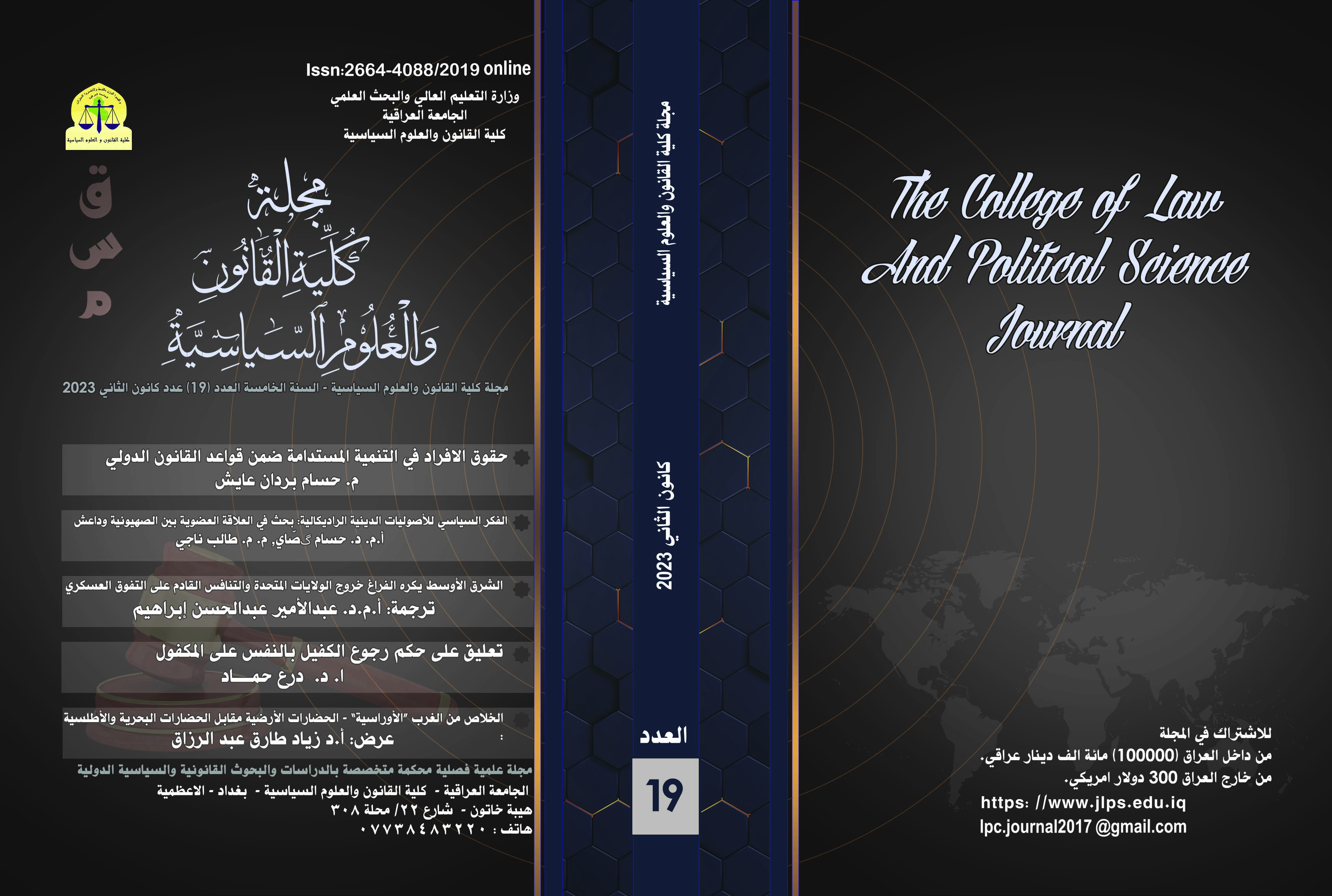صلاحيات امر الضبط وموقفه من نظامي الجمع والفصل بين السلطات في قانون اصول المحاكمات الجزائية لقوى الامن الداخلي رقم 17 لسنة 2008
DOI:
https://doi.org/10.61279/nbc05c61الكلمات المفتاحية:
المحاكمات ، الاتهام والتحقيق ، الامن ، امر ضبطالملخص
اغلب التشريعات القضائية العسكرية تميل إلى تقريب الأحكام الخاصة بالقضاء العسكري مع الأحكام الواردة في التشريعات العامة في الدولة وبخاصة القضاء العادي، وذلك لتحقيق التناسق الكامل بين التشريعات العقابية والجزائية للدولة كونها تشريعات متكاملة تعتنق مبادئ واحدة نظرا لفائدتها التي تعود على القضاء العسكري باتحاده مع المبادئ العامة للتشريعات العامة مستفيدا من الأحكام والمبادئ القانونية المستقرة وفي ظل تعدد القوانين الإجرائية وما استقرت عليه من ضوابط وقواعد شكليه تتفق من حيث الأثر الاجرائي المتمثل في تفعيل القانون الموضوعي وضبط مسارات الدعوى الجزائية في مراحلها المتعددة للوصول الى الحكم البات فيها واستقرار المراكز القانونية لأطرافها, نجد ان (قانون أصول المحاكمات الجزائية لقوى الامن الداخلي رقم 17 لسنة 2008) انفرد بضوابط وقواعد وتشكيلات اجرائية تتناسب مع اهدافه وطبيعة الجرائم التي يعالجها والصفة الشخصية لمرتكبيها او المتهمين بها ومنها تشكيل (آمر الضبط) (اي رئيس الدائرة او المؤسسة الامنية) وقد منحت هذه الجهة عدة صلاحيات ادارية وجزائية في ذات الوقت كما جمعت بين عدة سلطات اجرائية استثناءات من القاعدة العامة لذا تناولنا هذه الجهة بالتحليل والتأصيل واستقراء مفردات النصوص التي تناولتها لتشخيص الاخطاء التنظيمية والتشريعية التي اعترتها بغية معالجتها وايجاد الحلول التشريعية المناسبة لها.
التنزيلات
منشور
إصدار
القسم
الفئات
الرخصة
الحقوق الفكرية (c) 2023 مجلة كلية القانون والعلوم السياسية

هذا العمل مرخص بموجب Creative Commons Attribution-NonCommercial-NoDerivatives 4.0 International License.





